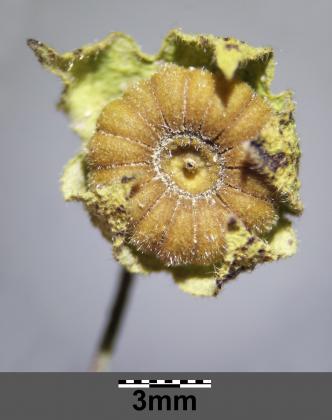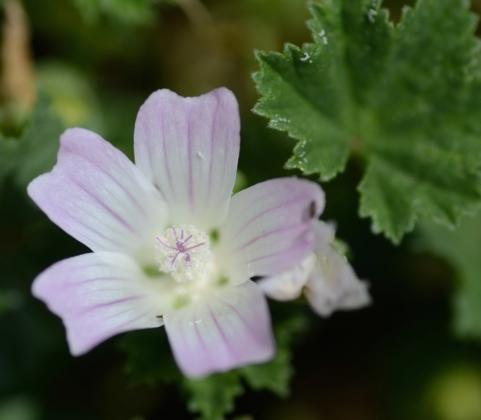Malva neglecta - Ancient remedy and vegetable
Backyard Horticulture
Malva neglecta and other species in the Malva genus, Malva spp., share the common names common mallow, buttonweed and cheeseweed. Used the same way, they are in the ancient Malvaceae family whose fossils have been found dating back to 23.03 to 5.333 million years ago, Mya. It is possible that fossils from 100 to 66 Mya, are from the family. The first humans appeared between 5 and 7 Mya. Homo sapiens showed up about 350,000 years ago.
In Grimes County, Malva spp. is usually seen in open fields and vacant lots. The word neglecta is from neglected, used for plants that grow in untended areas. The words Malva and Malvaceae come from words meaning mallow and mallow just refers to the plant. Buttonweed and cheese-weed refer to the fruit, the seedpod, which is round and flattened.
Common mallow has kidney-shaped alternate leaves, often almost round. They are crinkled, shallowly lobed with toothed edges. About 1½ to 2 inches across, leaves attach to the main stem on long hairy stalks extending from a basal rosette. Stalks can be 12 inches long and may have a red tinge. The flowers, about ½ inch, are white to light pink to light purple, often with stripes. There are 5 petals with a notch at the tip so it may look like 10 petals. Fruit, less than ¼ inch has several compartments each with one seed. Seeds have a thick coating allowing them to remain viable for decades. Each plant can be 2 feet across but large clumps growing together can appear to be one large sprawling plant. There is a taproot that can be easily pulled when the plant is young but very difficult later when it becomes woody.
Horace (65 BCE - 8 BCE), a Roman poet said, “As for me, olives, endives and mallows provide sustenance.” M. neglecta is mucilaginous like many plants in the mallow family such as okra. Tea is made from the leaves or they can be cooked as a vegetable. Young leaves, flowers, seedpods can be eaten raw in salads. Older ones can be blended in smoothies and used to thicken soups. You can whip a decoction of the roots or seedpods to make meringue, an egg-white substitute. M. neglecta is in the Food and Drug Administration Poisonous Plant Database at fda.gov.
Malva spp. is used for skin problems, insect bites, wounds and broken bones. It is put in bathwater. Internally it is used for gastrointestinal, respiratory tract conditions and “women’s issues.”
Farmers have used M. neglecta to treat their animals. The cosmetic industry uses Malva spp. in many products. The plant is used to make yellow and green dye. The root was used as a toothbrush. Bees, butterflies, rabbits and other critters enjoy the plant. Pliny (23 AD - 79 AD), the Roman author, naturalist and philosopher said, “Whosoever shall take a spoonful of the Mallows shall that day be free from all diseases that may come to him.”






